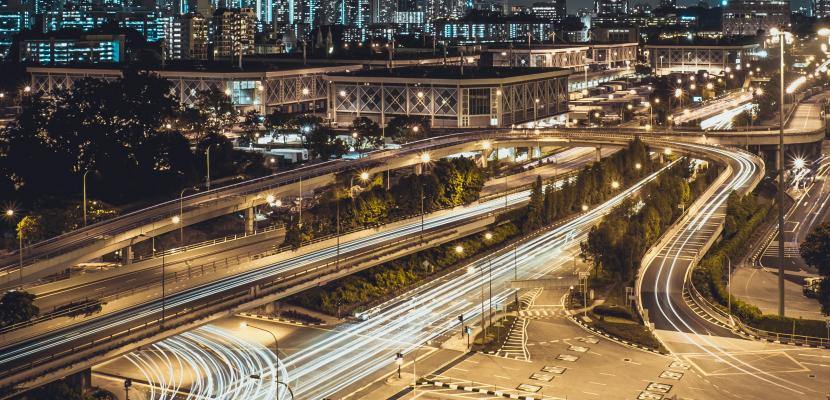Image

Harmonising logistic operation in city centres at regional level
Published on 03 July 2019

Italy
Emilia-Romagna
This is the good practice's implementation level. It can be national, regional or local.
About this good practice
In Emilia Romagna almost all the cities over 50.000 had historical city centres characterised by problems such as:
• Air pollution, mainly caused by vehicles’ emissions
• Traffic congestion,
• Freight distribution within the urban area.
• The Region has 281 million tons of road transport, of which 15% is intra-regional and most of which travels a distance of less than 50km.
The Regional Government, aware of the importance of city logistics to guarantee the optimization of freight distribution at regional level, signed the first Air Quality Agreement with Provinces and Municipalities over 50.000 inhabitants, developing actions to reduce negative impacts of freight transport. Following the Air Quality Agreement 2012 – 2015, within an EU project (C-Liege), Emilia Romagna defined and agreed with the main Municipalities over 50.000 inhabitants a set of city logistics rules harmonised on a regional scale, and addressed to freight vehicles under 3,5 ton in third party account, concerning in time windows and access restrictions to Limited Traffic Zones (LTZ). In addition in 2012, the regional Electric Mobility Plan contained a specific focus on city logistics actions, with the agreement aims to harmonise the access to the limited traffic zone (LTZ) for electric vehicles, including freight vehicles. The stakeholders involved in the project were
• Emilia Romagna Region
• Local public authorities (cities and mobility agencies)
• Logistics operators
• Air pollution, mainly caused by vehicles’ emissions
• Traffic congestion,
• Freight distribution within the urban area.
• The Region has 281 million tons of road transport, of which 15% is intra-regional and most of which travels a distance of less than 50km.
The Regional Government, aware of the importance of city logistics to guarantee the optimization of freight distribution at regional level, signed the first Air Quality Agreement with Provinces and Municipalities over 50.000 inhabitants, developing actions to reduce negative impacts of freight transport. Following the Air Quality Agreement 2012 – 2015, within an EU project (C-Liege), Emilia Romagna defined and agreed with the main Municipalities over 50.000 inhabitants a set of city logistics rules harmonised on a regional scale, and addressed to freight vehicles under 3,5 ton in third party account, concerning in time windows and access restrictions to Limited Traffic Zones (LTZ). In addition in 2012, the regional Electric Mobility Plan contained a specific focus on city logistics actions, with the agreement aims to harmonise the access to the limited traffic zone (LTZ) for electric vehicles, including freight vehicles. The stakeholders involved in the project were
• Emilia Romagna Region
• Local public authorities (cities and mobility agencies)
• Logistics operators
Expert opinion
The good practice is relevant for regional bodies or coordinating entities of multi-municipal strategies in several ways:
It shows the planning and implementation of a harmonised approach for all cities larger than 50.000 in the same region. The governance aspects show the involvement of the different stakeholders. A single system is more efficient than individual ones with different rules: cheaper to develop and implement for the public transport authorities, and easier to assimilate for the users.
The good practice also came early and can be deemed forword-looking: today, most larger cities suffer from logistics congestion and air quality impacts and seek measures. Here is one to take inspiration from.
It shows the planning and implementation of a harmonised approach for all cities larger than 50.000 in the same region. The governance aspects show the involvement of the different stakeholders. A single system is more efficient than individual ones with different rules: cheaper to develop and implement for the public transport authorities, and easier to assimilate for the users.
The good practice also came early and can be deemed forword-looking: today, most larger cities suffer from logistics congestion and air quality impacts and seek measures. Here is one to take inspiration from.
Works at
Interreg Europe Policy Learning Platform
Resources needed
This measure required the involvement of all the 12 cities of the Region. This means a great coordination effort made by 2 employees of the Region and 3 Project Officer of the Institute of Trasport and Logistic (ITL). This initiative was partly developed also thanks to 2 European projects
Evidence of success
In 2013 an “Agreement for a regional harmonisation of the access rules for freight vehicles to LTZs” was signed, which defined freight transport rules such as access times and permitted EURO classes, and supported the take up of electric vehicles. Thanks to a regional initiative, the IT systems and the general rules are harmonized (in particular the harmonization of time windows for access to LTZ on a regional scale), thus facilitating logistics operations in the main cities of the Region.
Potential for learning or transfer
Emilia Romagna actively promotes the improvement of city logistics, with the aim of better rationalising goods transport in urban areas with a view to sustainable mobility. This means reducing air and noise pollution as well as traffic congestion in the cities. The measures carried out in almost 15 years is highly transferable and respond to criteria of stability and duration over time and cover actions aimed at both improving environmental sustainability and transport efficiency of goods transport vehicles and creating new infrastructures for the reorganisation of freight distribution in urban areas.
Further information
Website
Good practice owner
You can contact the good practice owner below for more detailed information.
Organisation
Emilia-Romagna region

Italy
Emilia-Romagna
Contact
Mobility Manager
